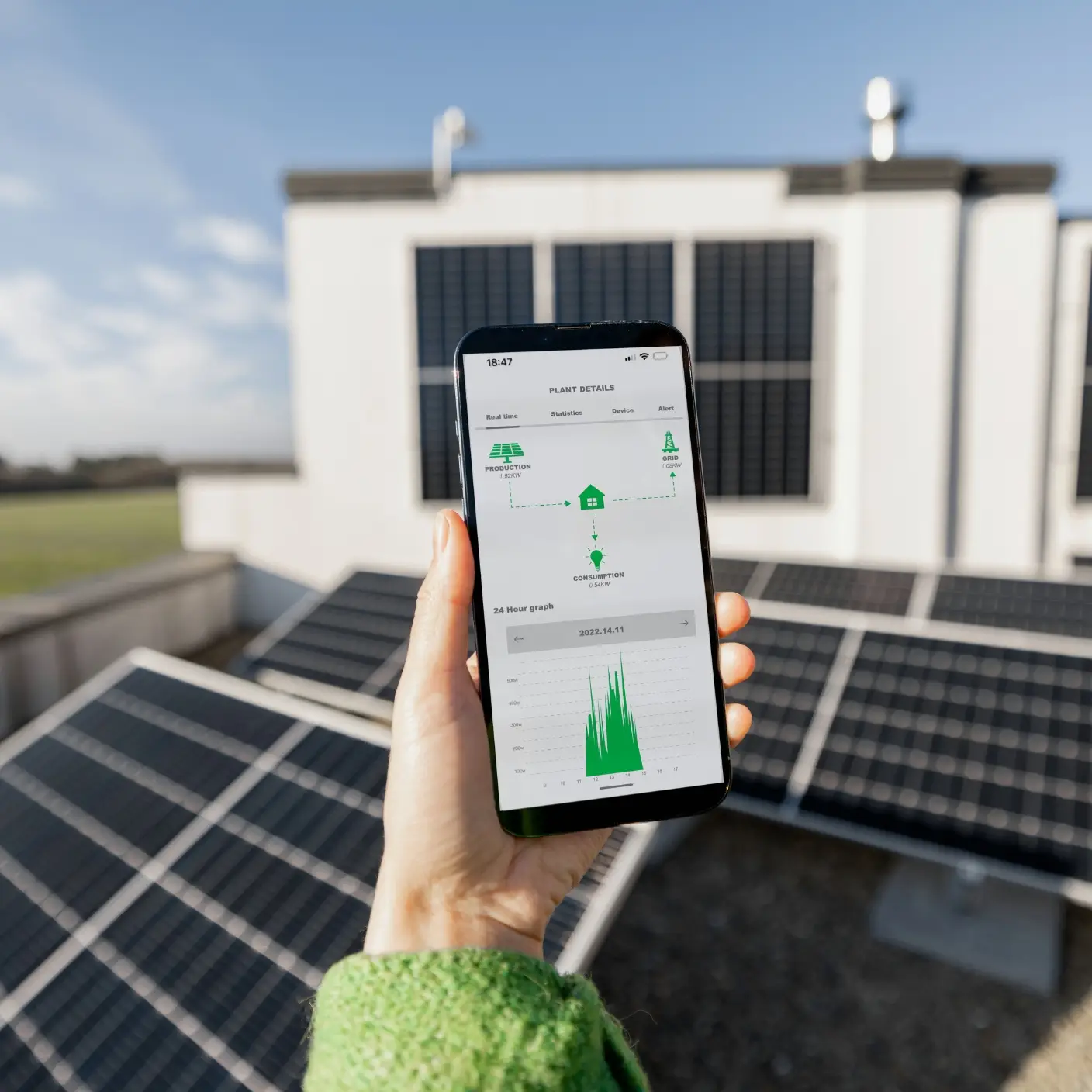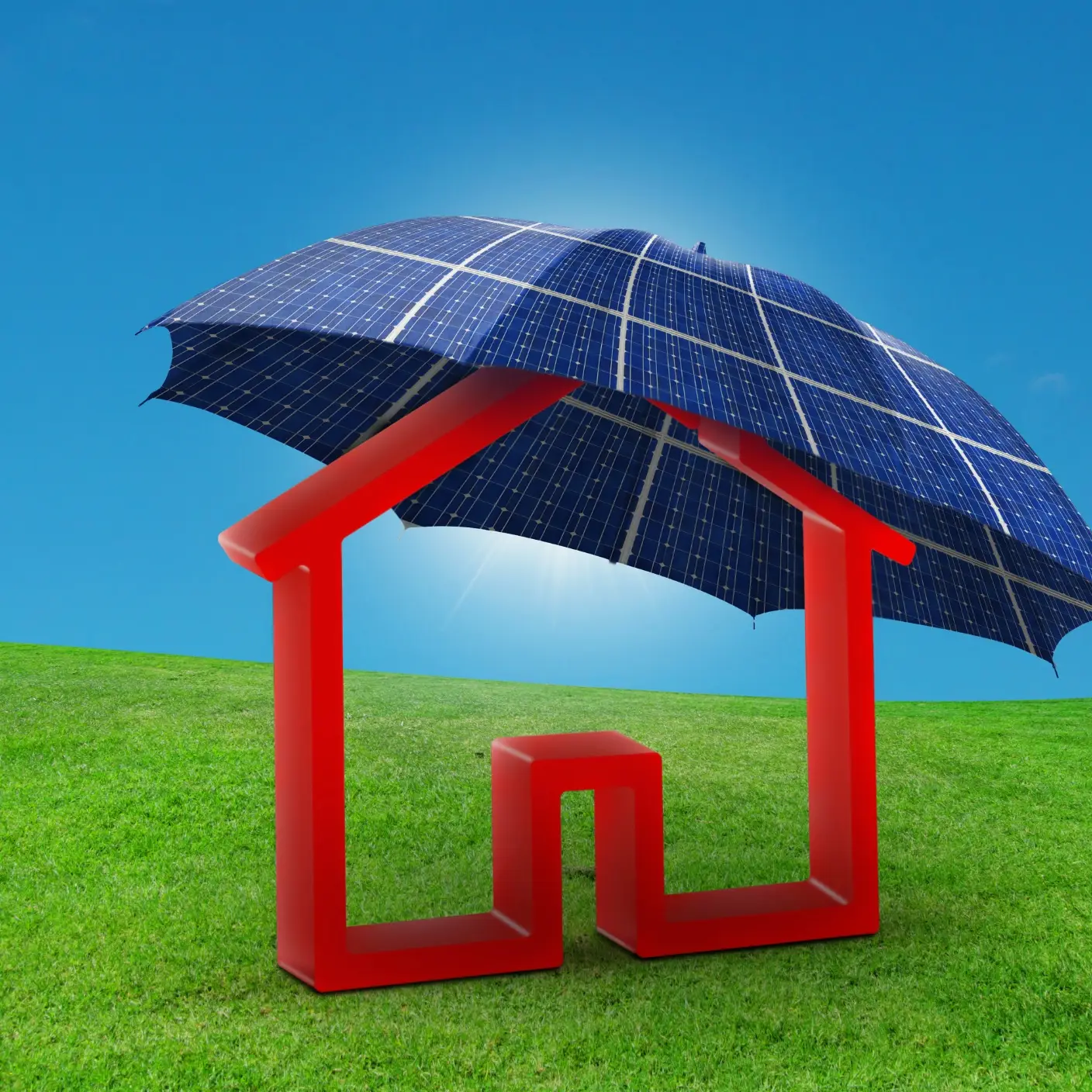Table of Contents
ToggleIntroduction

Picture waking up to the gentle warmth of the sun powering your home, effortlessly lighting up your mornings and keeping you cozy in the evenings—all while helping protect our beautiful planet. Sounds like a dream, right? Well, this is the reality that solar power is bringing to homes around the world. As we become more aware of the pressing need for sustainable energy, solar power shines brightly as a game-changer, transforming the way we live and consume energy. Whether you’re curious about cutting your electricity bills, reducing your carbon footprint, or simply embracing the latest green technology, this article will guide you through how solar energy is revolutionizing modern living. Join us as we explore the incredible journey of solar power, uncover its benefits, and discover why more homeowners are making the switch to harness the sun’s limitless potential.
The Growing Importance of Sustainable Energy
In an era marked by environmental challenges and escalating energy demands, the shift towards sustainable energy sources has never been more critical. Climate change, resource depletion, and the urgent need to reduce carbon emissions have propelled sustainable energy into the spotlight. As governments, businesses, and individuals seek eco-friendly alternatives, renewable energy solutions like solar power are gaining unprecedented traction.
Overview of Solar Power in Modern Homes
Solar power, once considered a niche technology, has rapidly evolved into a mainstream energy solution for homeowners worldwide. Advances in photovoltaic technology, decreasing installation costs, and supportive government incentives have made solar energy more accessible and attractive than ever before. Today, solar panels adorn rooftops across diverse climates and architectural styles, empowering homeowners to generate their own clean energy, reduce electricity bills, and contribute to a greener planet.
Purpose and Scope of the Article
This article delves into the transformative impact of solar power on residential living. We will explore how solar energy systems operate, the myriad benefits they offer, and the technological innovations driving their adoption. Additionally, we’ll address common challenges faced by homeowners and provide actionable insights to overcome them. Through case studies and future projections, this comprehensive guide aims to inform and inspire homeowners considering the switch to solar power, highlighting how this renewable energy source is revolutionizing homes for a sustainable future.
Understanding Solar Power

By understanding the basics of solar power, how it works, and the different systems available, you’re well on your way to making an informed decision about bringing this revolutionary energy source into your home.
What is Solar Power?
Imagine harnessing the sun’s energy to power your home—it sounds like something out of a sci-fi movie, right? But solar power makes this a reality. Simply put, solar power captures sunlight and converts it into electricity or heat that you can use in your daily life. It’s a clean, renewable energy source that helps reduce our dependence on fossil fuels, making it a superhero in the fight against climate change. Whether it’s powering your lights, heating your water, or even charging your gadgets, solar power is transforming the way we think about energy.
How Solar Panels Work
Ever wondered how those sleek panels on rooftops actually generate electricity? Solar panels are made up of photovoltaic (PV) cells that absorb sunlight and convert it into direct current (DC) electricity. This DC power is then transformed into alternating current (AC) through an inverter, making it compatible with your home’s electrical system. Think of it as capturing sunlight and turning it into the electricity that keeps your home running smoothly. With advancements in technology, modern solar panels are more efficient and affordable than ever, making solar energy accessible to more people.
Types of Solar Energy Systems for Homes
Not all solar systems are created equal. There are three main types to consider: grid-tied, off-grid, and hybrid systems. Grid-tied systems connect directly to the utility grid, allowing you to use solar power when the sun is shining and draw from the grid when it’s not. Off-grid systems are perfect for those in remote areas, relying solely on solar power and battery storage. Hybrid systems offer the best of both worlds, combining solar power with grid connectivity and battery backup for maximum flexibility and reliability. Each type has its unique benefits, so you can choose the one that best fits your lifestyle and energy needs.
Benefits of Solar Power for the Homeowner
By embracing solar power, homeowners not only contribute save costs and receive financial incentives to a greener planet but also gain greater energy independence and reliability, making it a truly revolutionary choice for modern living.
Cost Savings and Financial Incentives

By understanding the basics of solar power, how it works, and the different systems available, you’re well on your way to making an informed decision about bringing this revolutionary energy source into your home.
Reduction in Electricity Bills
Imagine slashing your monthly electricity bill while harnessing the power of the sun—sounds incredible, right? That’s exactly what solar power offers to homeowners. By generating your own electricity, you rely less on the grid, which means lower utility bills. During sunny days, your solar panels produce excess energy that can even be sent back to the grid, earning you credits or additional savings. Over time, these reductions add up, making solar power not just an environmentally friendly choice but also a smart financial investment. Many homeowners find that their initial investment in solar panels pays for itself within a few years, leading to significant long-term savings.
Tax Credits and Rebates
Going solar doesn’t just save you money on your bills—it can also save you upfront! Various government incentives, including tax credits and rebates, make switching to solar more affordable than ever. For instance, the federal Investment Tax Credit (ITC) allows you to deduct a significant percentage of your solar installation costs from your taxes. Additionally, many states and local governments offer their own rebates and incentives, further reducing the initial cost. These financial perks not only make solar power more accessible but also enhance its return on investment, ensuring that going green is a win-win for both your wallet and the planet.
Environmental Impact
Reduction in Carbon Footprint
Imagine making a positive impact on the planet every time you flip a switch. That’s the magic of solar power! By generating clean energy from the sun, solar panels significantly reduce the amount of carbon dioxide and other harmful greenhouse gases released into the atmosphere. This means fewer emissions contributing to climate change and a healthier environment for future generations. It’s a simple yet powerful way to do your part in preserving our beautiful planet.
Sustainable Energy Source
Solar power is the epitome of sustainability. Unlike fossil fuels, which are finite and polluting, the sun provides an endless supply of energy without depleting natural resources. Harnessing solar energy means tapping into a reliable and renewable source that won’t run out anytime soon. This shift not only supports environmental conservation but also promotes a more resilient and sustainable energy infrastructure for our communities.
Energy Independence and Reliability
Protection Against Power Outages
Picture this: a sudden storm knocks out the power in your neighborhood. With a solar energy system equipped with battery storage, your home can keep the lights on and essential appliances running smoothly. Solar power provides a reliable backup during outages, ensuring that you and your family remain comfortable and safe even when the grid goes down.
Long-Term Energy Security
Relying on traditional energy sources can be unpredictable and subject to market fluctuations. Solar power offers long-term energy security by allowing you to generate your own electricity. This independence from external energy suppliers not only stabilizes your energy costs but also shields you from rising utility prices, giving you peace of mind and greater control over your energy future.
Technological Advancements Driving the Revolution
These technological advancements are not just improving how we capture and use solar energy—they’re making solar power more accessible, reliable, and stylish for every home.

Improvements in Solar Panel Efficiency
Remember when solar panels were bulky and less effective? Those days are long gone! Modern solar panels are marvels of engineering, boasting significantly higher efficiency rates. This means they can capture more sunlight and convert it into electricity, even on cloudy days. Advances in materials and design have made panels slimmer, more durable, and aesthetically pleasing, allowing them to blend seamlessly with various home styles while maximizing energy production.
Energy Storage Solutions
Battery Technologies
One of the game-changers in solar technology is the development of advanced battery storage systems. These batteries store excess energy generated during sunny days, ensuring you have power even when the sun isn’t shining. From sleek, compact home batteries to larger systems for whole-house storage, these innovations provide reliability and peace of mind, making solar energy a consistent power source.
Smart Grid Integration
Smart grids are transforming how we use and manage energy. By integrating solar power with smart grid technology, homeowners can monitor and control their energy usage in real-time. This seamless interaction not only optimizes energy distribution but also allows for better management of supply and demand, enhancing the overall efficiency and reliability of the energy system.
Innovations in Installation and Design
Installing solar panels has never been easier or more stylish. Innovations in mounting systems and panel designs mean quicker installations with minimal disruption to your home’s appearance. From flexible panels that can be applied to various surfaces to integrated solar roof tiles that look like traditional roofing materials, these advancements make adopting solar power simpler and more visually appealing than ever before.
Overcoming Challenges in Adopting Solar Power
By understanding and addressing these common challenges, homeowners can confidently embrace solar power, enjoying its numerous benefits while minimizing potential obstacles.

Initial Installation Costs
Taking the leap into solar power can feel like a big financial commitment upfront. The initial installation costs for solar panels can be daunting for many homeowners. However, it’s important to see this as an investment rather than an expense. Over time, the savings on your electricity bills can offset the initial costs, and various financing options like solar loans and leases make it more manageable. Plus, the long-term benefits of increased property value and energy independence add significant value to your home.
Regulatory and Permitting Hurdles
Navigating the maze of regulations and permits required for installing solar panels can be overwhelming. Different regions have varying codes and requirements, which can slow down the installation process. However, many solar companies offer assistance with paperwork and ensure that all local regulations are met, making the transition smoother for homeowners. Staying informed about local incentives and building codes can also help streamline the process.
Maintenance and Durability Concerns
Worried about the upkeep of your solar panels? Modern solar systems are designed to be low-maintenance and highly durable, often coming with warranties that last 20 years or more. Routine checks and occasional cleaning to remove debris or dust are usually all that’s needed to keep your system running efficiently. Advances in technology have made solar panels more resilient to various weather conditions, ensuring they last longer and perform better.
Solutions and Strategies to Address These Challenges
Facing these challenges head-on can make adopting solar power much easier. Opting for reputable solar installers who provide comprehensive support can alleviate concerns about costs and regulations. Leveraging available financial incentives and exploring different financing options can help manage the initial investment. Additionally, choosing high-quality, durable panels and setting up regular maintenance schedules ensures your solar system remains efficient and reliable for years to come. By addressing these hurdles with informed strategies, the path to a solar-powered home becomes clear and achievable.
Case Studies : Homes Transformed by Solar Power
These case studies not only showcase the tangible benefits of solar power but also provide inspiring examples and practical advice for homeowners considering the switch. Seeing real-life transformations makes the potential of solar energy both relatable and attainable.

Residential Success Stories
Meet the Johnson family from sunny Arizona. After installing solar panels on their roof, they saw their electricity bills drop by nearly 70%. Not only did they save money, but they also took pride in reducing their carbon footprint. Their home is now a beacon in the neighborhood, inspiring neighbors to explore solar energy. Similarly, the Martinez household in California enjoys energy independence, relying almost entirely on their solar system even during peak hours. These stories highlight how solar power can bring substantial financial savings and a sense of environmental responsibility to everyday families.
Comparative Analysis of Pre and Post-Solar Adoption
Before going solar, many homeowners struggled with high electricity bills and frequent power outages. Take the Lee family, for example. Pre-solar, their monthly bills were a constant source of stress, and outages during storms left them in the dark. After adopting solar power with battery storage, their energy costs plummeted, and they enjoyed uninterrupted power even during severe weather. This comparative analysis shows a clear transformation from dependency on the grid to a more stable and cost-effective energy solution.
Lessons Learned from Early Adopters
Early adopters of solar power have shared valuable lessons that can guide new homeowners on their solar journey. One key takeaway is the importance of choosing the right installer—quality and reliability matter. Another lesson is to thoroughly assess your home’s solar potential, ensuring maximum efficiency and savings. Additionally, embracing energy storage solutions can enhance reliability and independence. These insights from pioneers in solar adoption demonstrate that with careful planning and informed decisions, transitioning to solar power can be smooth and highly rewarding.
The Future of Solar Power in Residential Settings
As we look ahead, the fusion of cutting-edge technology, supportive policies, and growing environmental awareness will propel residential solar power into a new era, making sustainable living more attainable and exciting for everyone.

Emerging Trends and Predictions
The future of solar power in homes looks brighter than ever! One exciting trend is the rise of building-integrated photovoltaics (BIPV), where solar cells are seamlessly incorporated into building materials like windows and roofs. This not only enhances aesthetics but also boosts energy efficiency. Additionally, we’re seeing a surge in community solar projects, allowing neighbors to share the benefits of a single solar installation. Predictions indicate that solar technology will continue to advance, making panels even more efficient and affordable, while innovative financing models will make solar accessible to a broader audience.
�
Integration with Smart Home Technologies
Imagine your solar system working in harmony with your smart home devices. Integration with smart technologies allows homeowners to monitor and control their energy usage in real-time through smartphones and voice-activated assistants. Smart inverters and energy management systems optimize the flow of electricity, ensuring maximum efficiency and convenience. This synergy not only enhances energy savings but also provides greater control and flexibility, making solar power an integral part of the connected home.
Policy and Market Drivers Shaping the Future
Government policies and market dynamics play a crucial role in shaping the future of residential solar power. Incentives like tax credits, rebates, and net metering policies continue to encourage adoption. Furthermore, increasing investments in renewable energy infrastructure and the push for carbon neutrality are driving demand for solar solutions. As more people recognize the economic and environmental benefits, the solar market is expected to expand rapidly, fostering innovation and competition that will further lower costs and improve technology.
How to Get Started with Solar Power for Your Home
By following these steps, you can confidently embark on your solar journey, turning your home into a beacon of sustainable energy and enjoying the many benefits that come with harnessing the power of the sun.

Assessing Your Home's Solar Potential
Starting your solar journey begins with understanding your home’s solar potential. Think of it as a first date with the sun! Evaluate factors like roof orientation, shading from trees or nearby buildings, and the size of your roof space. Tools like solar calculators and professional assessments can help estimate how much sunlight your home receives and how much energy you can generate. This step ensures you’re making the most of what nature offers and sets the stage for a successful solar installation.
Choosing the Right Solar System and Provider
With your solar potential assessed, the next step is selecting the right solar system and provider. It’s like picking the perfect outfit—fit and quality matter! Consider the types of panels, inverters, and mounting systems that best suit your needs and budget. Research reputable providers who offer comprehensive warranties, excellent customer service, and transparent pricing. Don’t hesitate to ask for recommendations or read reviews to find a partner you can trust on your solar journey.
Steps to Installation and Activation
Once you’ve chosen your system and provider, it’s time to bring solar to life. The installation process typically involves site assessment, obtaining necessary permits, and the actual mounting of panels. Skilled technicians handle the setup, ensuring everything is safely and correctly installed. After installation, your system will undergo a final inspection before activation, allowing you to start generating your own clean energy and enjoying the benefits of solar power.
Maintenance Tips for Optimal Performance
Keeping your solar system in top shape is easier than you might think. Regular maintenance includes cleaning the panels to remove dust and debris, inspecting for any damage, and monitoring performance through your system’s app or dashboard. Most solar panels are designed to be low-maintenance, but occasional checks ensure they operate efficiently and continue to provide maximum energy savings for years to come.
Conclusion
By reflecting on the incredible benefits and envisioning a sustainable future, we hope this article has inspired you to consider solar power as a viable and rewarding option for your home. Embrace the sunshine and join the revolution in creating a brighter, greener tomorrow!

Recap of Solar Powers Impact on Homes
As we’ve journeyed through the world of solar power, it’s clear just how transformative this technology can be for homes. From slashing electricity bills and benefiting from financial incentives to significantly reducing our carbon footprint, solar energy offers a multitude of advantages. Homes equipped with solar panels not only become more energy-efficient but also contribute to a sustainable future, showcasing how individual choices can make a big difference.
Encouraging Sustainable Practices
Embracing solar power is more than just installing panels on your roof—it’s a commitment to sustainable living. By choosing solar energy, you’re taking a proactive step towards reducing reliance on fossil fuels and supporting the growth of renewable energy. This shift encourages a broader adoption of eco-friendly practices, inspiring neighbors and communities to follow suit. Every solar-powered home adds to the collective effort of creating a greener, healthier planet for generations to come.
Final Thoughts on Embracing Solar Energy
Switching to solar power is a powerful way to take control of your energy future. It’s an investment that pays off not just financially, but also environmentally and socially. As technology continues to advance and become more accessible, there’s never been a better time to make the switch. Embracing solar energy means joining a movement towards innovation, sustainability, and resilience. So why wait? Let the sun power your home and be a part of the revolution that’s changing the way we live.
Additional Resources
Exploring these additional resources will equip you with the knowledge and support needed to confidently transition to solar power. Whether you’re seeking detailed information, financial incentives, or practical planning tools, these resources are here to guide you every step of the way on your solar journey.
Recommended Reading and Websites
Diving deeper into the world of solar power? There are plenty of fantastic resources to expand your knowledge. Websites like EnergySage and Solar Energy Industries Association (SEIA) offer comprehensive guides, the latest industry news, and detailed information on solar technologies. For those who love reading, books like “Solar Power Your Home For Dummies” by Rik DeGunther are available on Amazon and provide easy-to-understand insights and practical tips. Blogs such as CleanTechnica and GreenTech Media regularly feature articles on innovations and trends in solar energy, keeping you informed and inspired as you consider making the switch.
Government and Non-Profit Organisations Supporting Solar Adoption
Navigating the solar landscape is easier with the support of various government and non-profit organizations. The Database of State Incentives for Renewables & Efficiency (DSIRE) is a valuable tool for finding local incentives and rebates. Organizations like the Sierra Club and the American Solar Energy Society (ASES) advocate for renewable energy adoption and offer resources to help you get started. Additionally, government programs such as the Federal Investment Tax Credit (ITC) provide financial incentives that can significantly reduce the cost of your solar installation. These organizations not only offer financial support but also valuable guidance and advocacy to help you embrace solar energy with confidence.
Tools and Calculators for Solar Energy Planning
Planning your solar journey is made simple with a variety of online tools and calculators. The Solar Calculator by EnergySage allows you to estimate your potential savings and the size of the system you need based on your location and energy usage. PVWatts from the National Renewable Energy Laboratory (NREL) provides detailed estimates of energy production and cost savings for different solar setups. Additionally, apps like SolarEdge Monitoring help you track your system’s performance in real-time, ensuring you get the most out of your investment. These tools empower you to make informed decisions, tailor your solar setup to your specific needs, and maximize the benefits of going solar.
At Planet Ideal, we’re on a mission to make sustainable living accessible for everyone. Our team of eco-enthusiasts writes short, snappy, and easy-to-digest articles designed to inspire real change without overwhelming. From practical tips to innovative ideas, we’re here to prove that living green can be stylish, convenient, and enjoyable. Join us as we empower individuals, families, and communities to embrace eco-friendly lifestyles—one step, one story, and one solution at a time.






